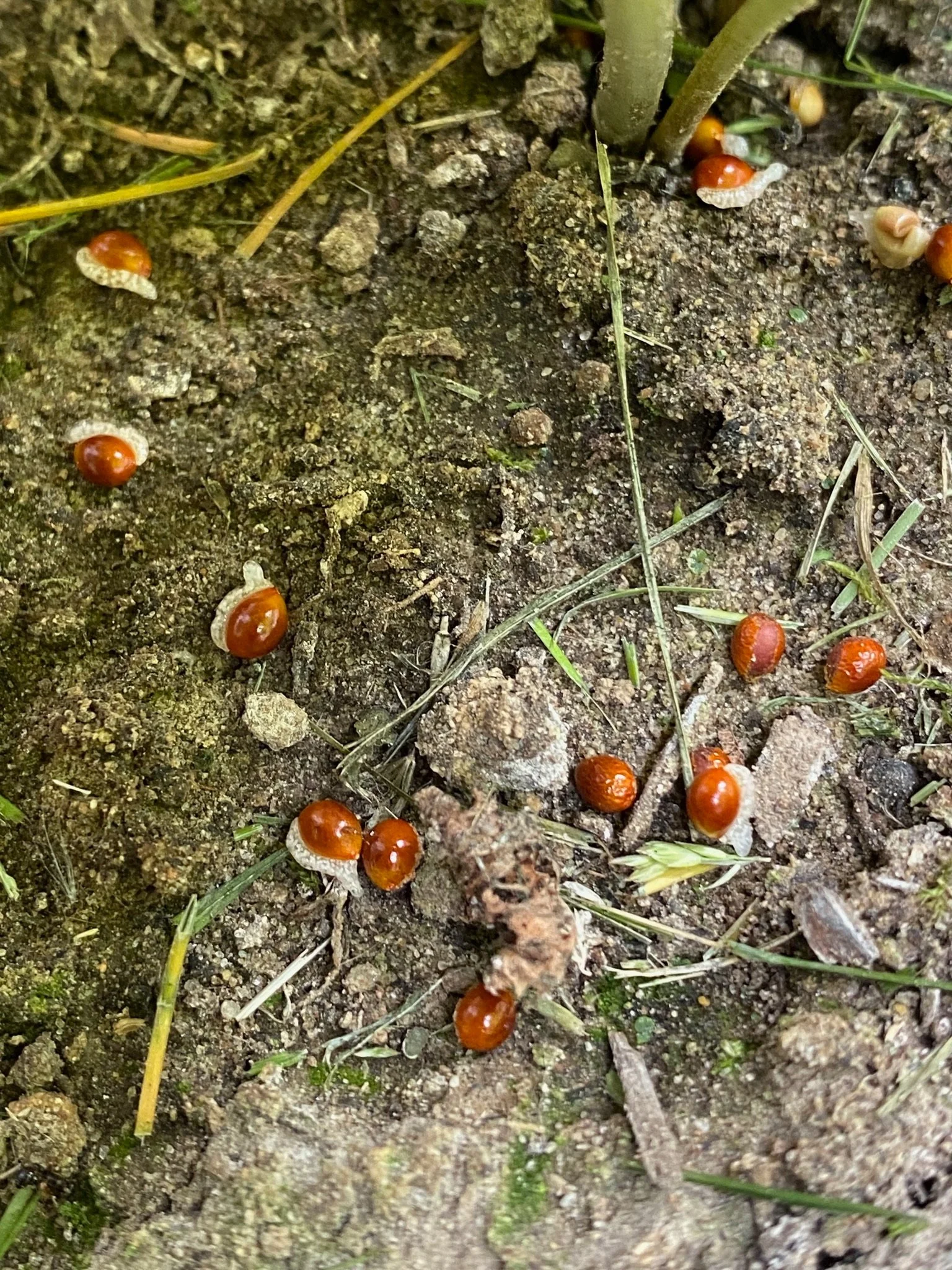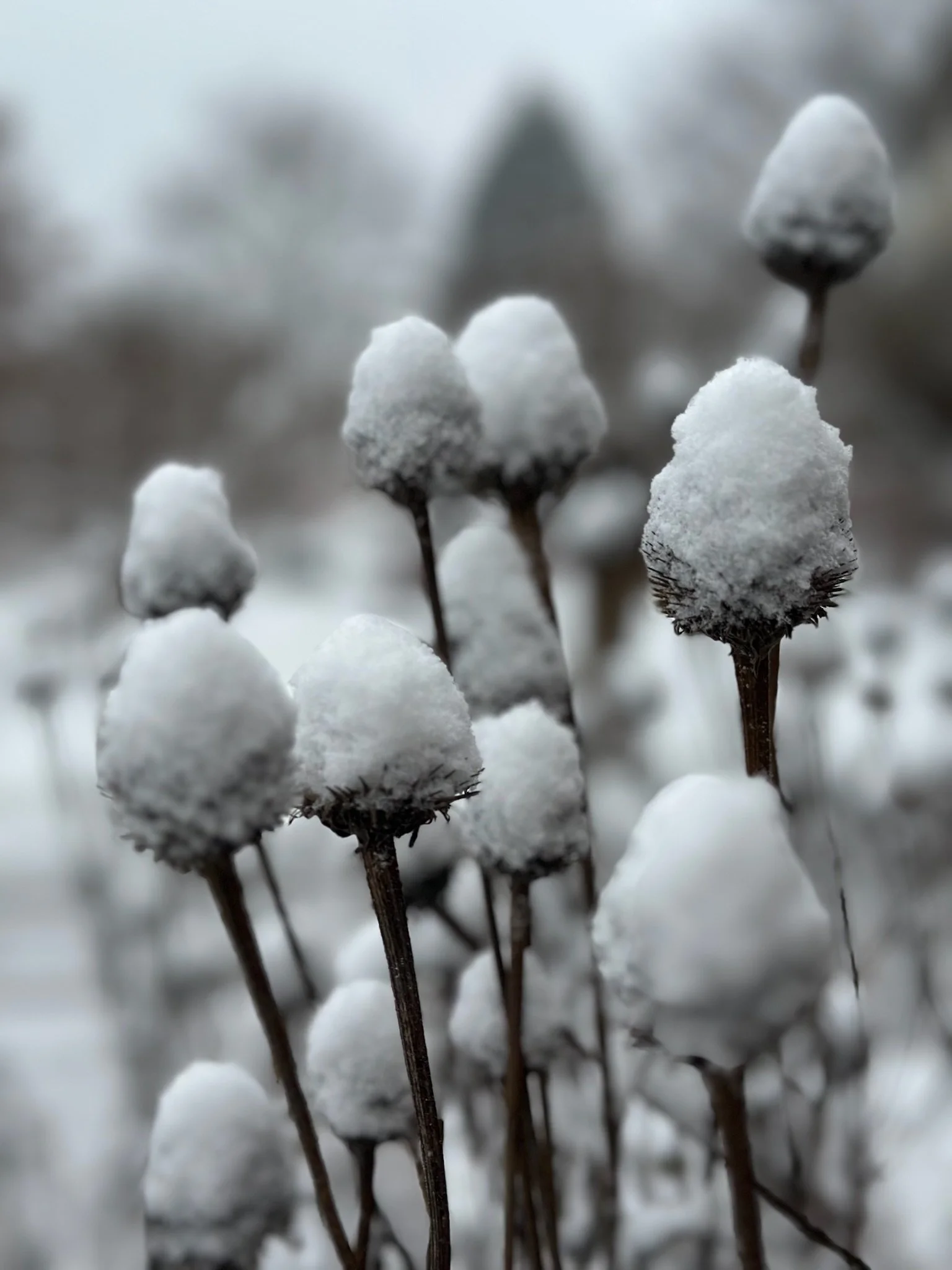Direct Sowing
Direct sowing is a great way to add native plants into your garden which will help create a thriving ecosystem in your garden. Instead of growing plants from seedlings indoors and transplanting them out when they are large enough, you would plant the seeds directly in the ground. This can be done at different times of the year based off the specific plants needs. A lot of native plants in our area require a period of cold moist stratification. This means the seeds need to be moist and the temperature should fluctuate and stay cold for a certain amount of time. If your seed package indicates that it is suitable, you might consider direct sowing it in late fall. While many native seeds can be planted directly in late fall, there are also numerous seeds that can be planted in early spring.
Benefits
There are quite a few benefits of direct sowing. It is an excellent way to diversify your garden and will benefit the pollinators in the long run. Here are a few reasons you should try direct sowing native seeds in your garden:
Cost Effective. Direct sowing is probably the cheapest way to add new plants on your property. You don’t have to worry about the cost associated with growing plants indoors, or purchasing plants from a nursery. The upfront cost of the seeds is all you need to purchase.
Easy. By directly sowing you take out all the extra steps of growing plants from seed. You just have to plant the seeds at the correct time and nature will do the rest for you. No need for a greenhouse, extra soil, pots, transplanting. This alone might make you want to try it out.
No Transplanting. When plants are grown directly in the ground there is no need to transplant them. Transplanting can cause shock to the plants and can kill them. Not having to move plants around takes the stress off the plants and can lead to healthy young plants. There are some plants that should not be transplanted at all because they will not survive the transplant shock, these are often plants with long tap roots.
Strong Roots. When you sow seeds directly in the ground the plants will grow stronger root systems. Not having to move them around and giving them unlimited soil space will help their roots grow a lot stronger which leads to a high success rate.
Sustainable. Direct sowing is a sustainable way to grow new plants in your garden. You don’t have to use artificial lighting and extra water throughout the winter to grow plants. Let nature do the work for you.
Drawbacks
While direct sowing seeds has numerous advantages, it's worth noting a few potential challenges to help you prepare and avoid surprises.
Foot Traffic. If you share your space with children or pets, they may unintentionally trample over your planting area. This could disrupt the seeds, pushing them too deeply into the soil or scattering them away from their intended spots. To prevent this, consider fencing off the area or creating a clear boundary to keep little feet (and paws) at bay.
Wildlife. Garden visitors like squirrels or mice might see your seeds as a convenient snack—food is scarce in the winter months, after all, and who can blame them? While we may understand their struggle, it can still be frustrating when they interfere with your planting efforts. While a blanket of snow can sometimes deter them, it’s not always reliable. To protect your seeds, try fencing the area or leaving seed heads on established plants as an alternative food source for wildlife, reducing their interest in your freshly sown seeds.
Surface-Sown Seeds: Some seeds are tiny or need exposure to light to germinate, making them vulnerable when direct sown. They might blow away or be displaced by weather conditions. For such seeds, you may want to explore alternative sowing methods to ensure better control and monitoring as they germinate.
By being mindful of these potential drawbacks, you’ll be better equipped to make your direct sowing efforts as successful as possible!
How Does It Work?
Some seeds require an extra pre treatment before they are planted. These treatments are to break the seed coats that keep them dormant. These methods consist of soaking in water, changing the temperature, or even scarifying the outside of the seeds. Surprisingly, in some countries some seeds need to pass through an animal's digestive system to germinate. For example, seeds like Juniper and Holly often need to pass through a bird's digestive system to germinate. To mimic this process at home, these seeds should be treated with an acid, most commonly sulfuric acid. However, this method is potentially dangerous and not recommended for home use.
Plants will all have different ways their seeds need to be treated prior to their germination. It is important to look into this before you sow your seeds. This information should be on the seed packets.
Direct sowing is putting the seeds through the natural process of stratification. This exposes seeds to the temperature fluctuation in the winter, the moisture, and the potential foot traffic needed. If you choose to sow your seeds indoors and transplant out, you have the extra work of mimicking these natural occurrences. You might need to place the seeds in a soilless mixture and switch is back and forth between the freezer and fridge. Or you will have to use sandpaper to scarify the seeds. Direct sowing takes away the extra work and nature does this for you.
Selecting Plants
Not all plants can be directly sown. It's essential to research the specific plants you want to grow and ensure they are suitable for direct sowing. Fortunately, many native plants thrive when sown directly, as this mimics their natural growing conditions. However, some plants require a specific environment, in such cases, it's best to start these plants indoors and transplant them outdoors later.
When selecting your plants to direct sow you can look on the seed packages for guidance. They might say “sow directly outdoors in a prepared seedbed in late fall” or “sow directly outdoors in a prepared seedbed early spring”. Your seed packages might also have a germination code. These codes will translate to the different ways you can treat your seeds.
Our downloadable Germination Codes pdf is coming soon.



